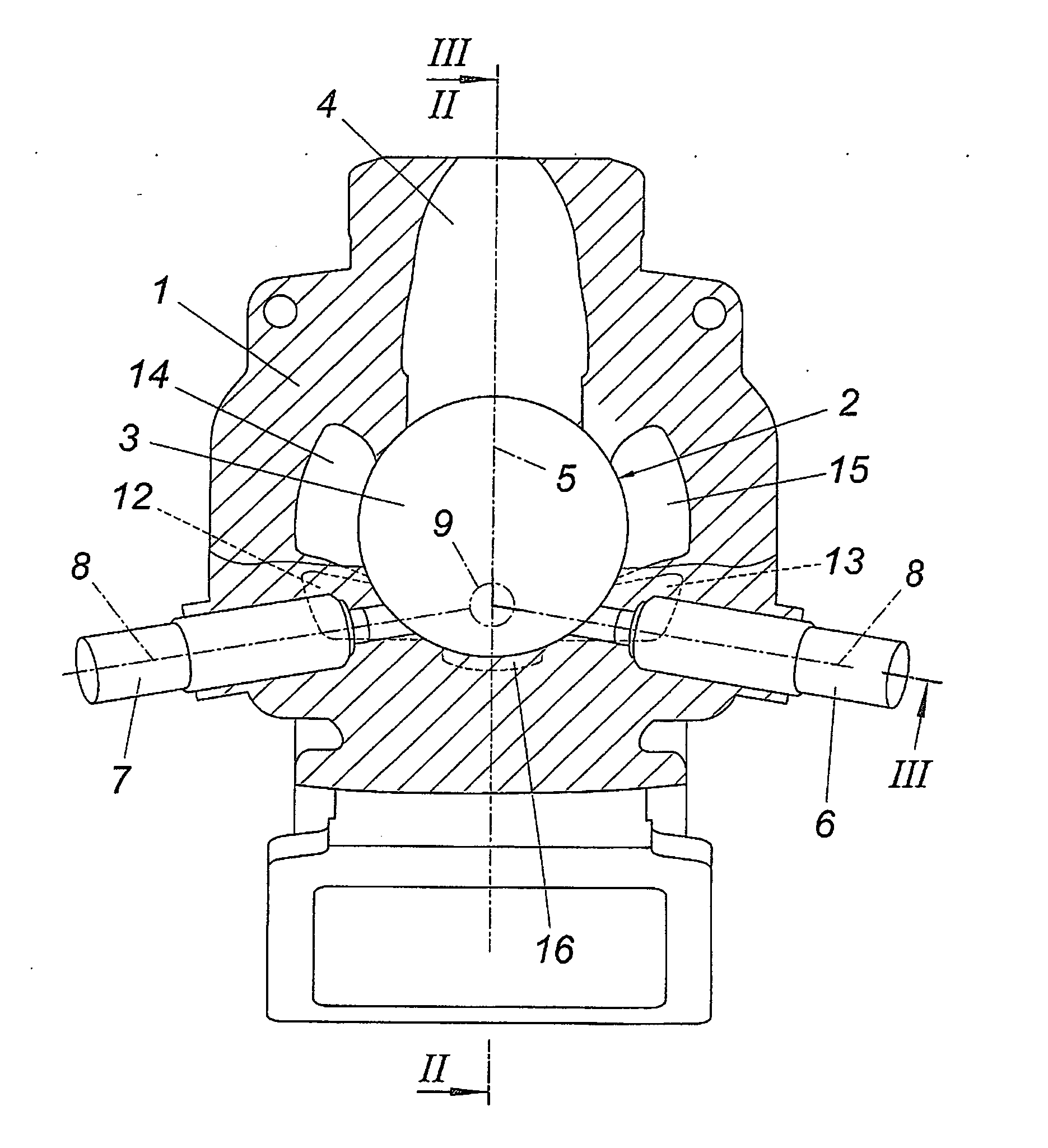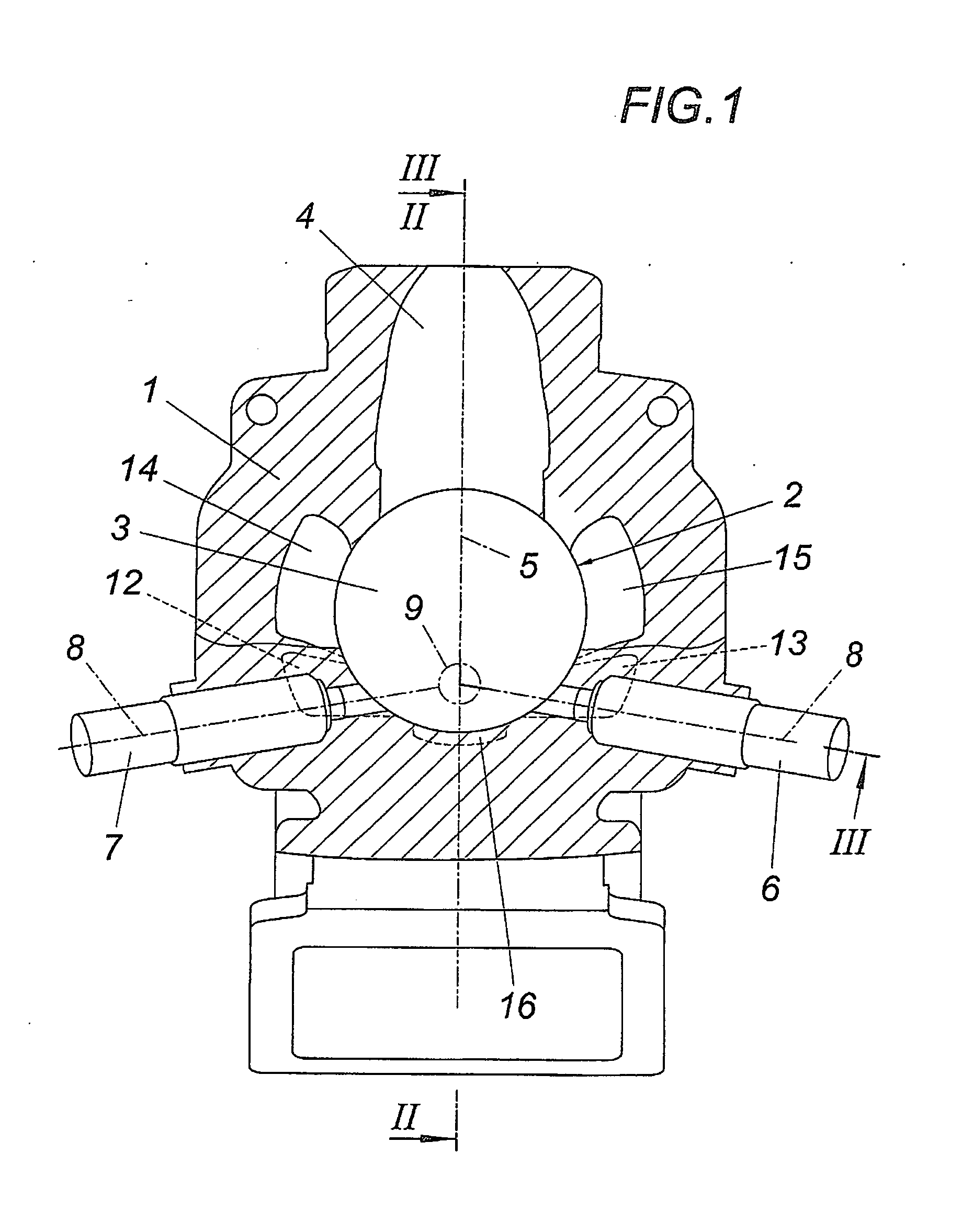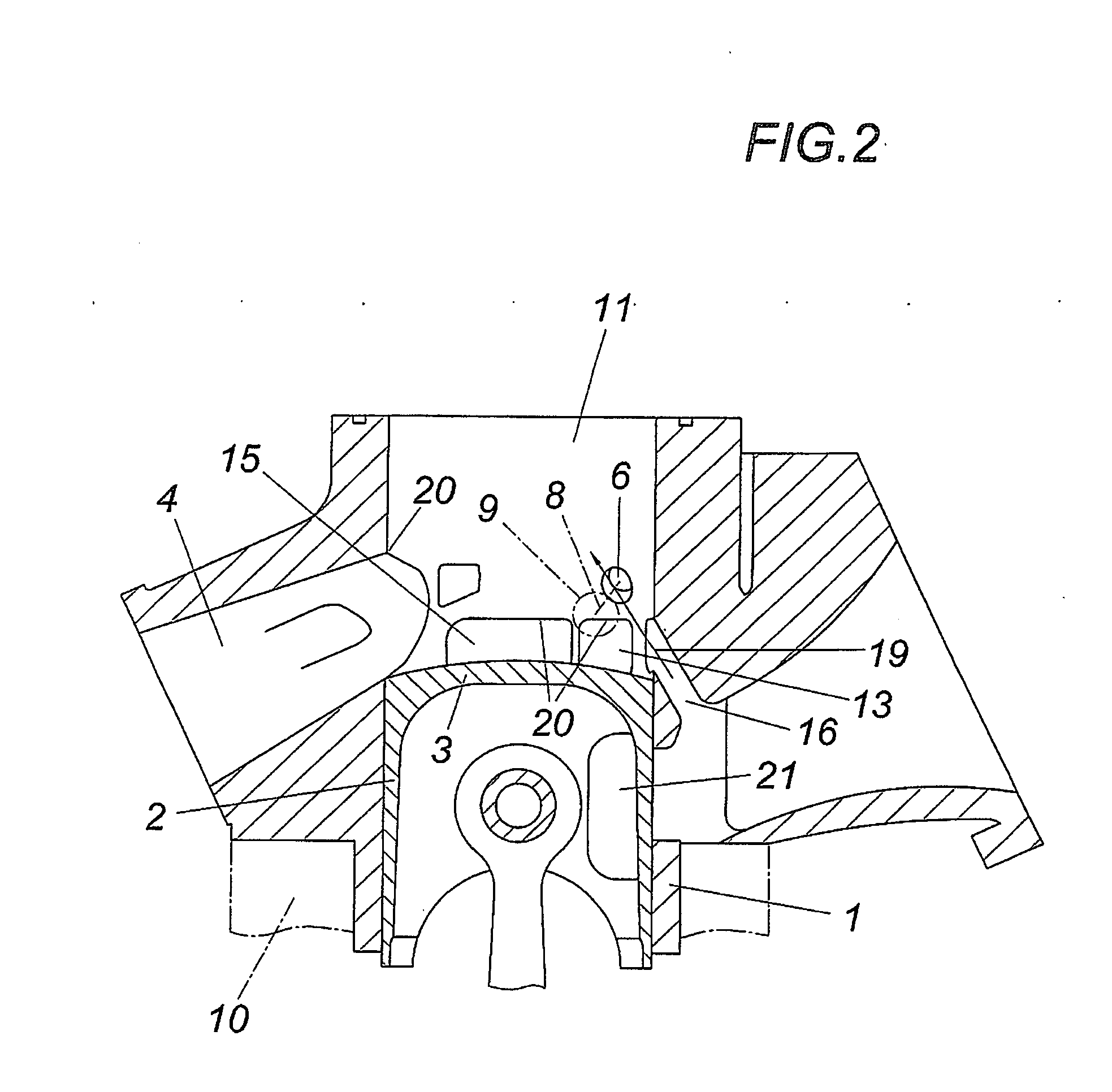Two-cycle combustion engine
a combustion engine and two-cycle technology, applied in the direction of engine components, mechanical equipment, fuel injection apparatus, etc., can solve the problems of insufficient time available within the cycle for this purpose, increased hydrocarbon emissions, and scavenging losses, so as to achieve effective prevention of combustion in the nozzle area, increase gas flow, and fuel concentration increase
- Summary
- Abstract
- Description
- Claims
- Application Information
AI Technical Summary
Benefits of technology
Problems solved by technology
Method used
Image
Examples
Embodiment Construction
[0017]The drawing merely shows a cylinder 1 without cylinder head of a motor block of a two-cycle combustion engine. The piston shown in the bottom dead centre position is designated with reference numeral 2 and comprises a piston crown 3. On the side of the cylinder which is opposite of the exhaust port 4, two injection nozzles 6, 7 are provided symmetrically relative to a diametral plane 5 determined by the axis of the exhaust port 4, the nozzle axes 8 of which intersect in the diametral plane 5, namely in an intersecting point 9, which lies in the bottom dead centre position of piston 2 above the piston crown 3, as is shown especially in FIG. 5.
[0018]Transfer ports 12, 13 and 14, 15 are provided between the crankcase 10 and the combustion chamber 11 of the cylinder 1, which ports are opposite of one another in pairs and are arranged symmetrically in relation to the diametral plane 5. In addition, the cylinder 1 comprises a transfer port as a raising port 16 which is diametrically...
PUM
 Login to View More
Login to View More Abstract
Description
Claims
Application Information
 Login to View More
Login to View More - R&D
- Intellectual Property
- Life Sciences
- Materials
- Tech Scout
- Unparalleled Data Quality
- Higher Quality Content
- 60% Fewer Hallucinations
Browse by: Latest US Patents, China's latest patents, Technical Efficacy Thesaurus, Application Domain, Technology Topic, Popular Technical Reports.
© 2025 PatSnap. All rights reserved.Legal|Privacy policy|Modern Slavery Act Transparency Statement|Sitemap|About US| Contact US: help@patsnap.com



